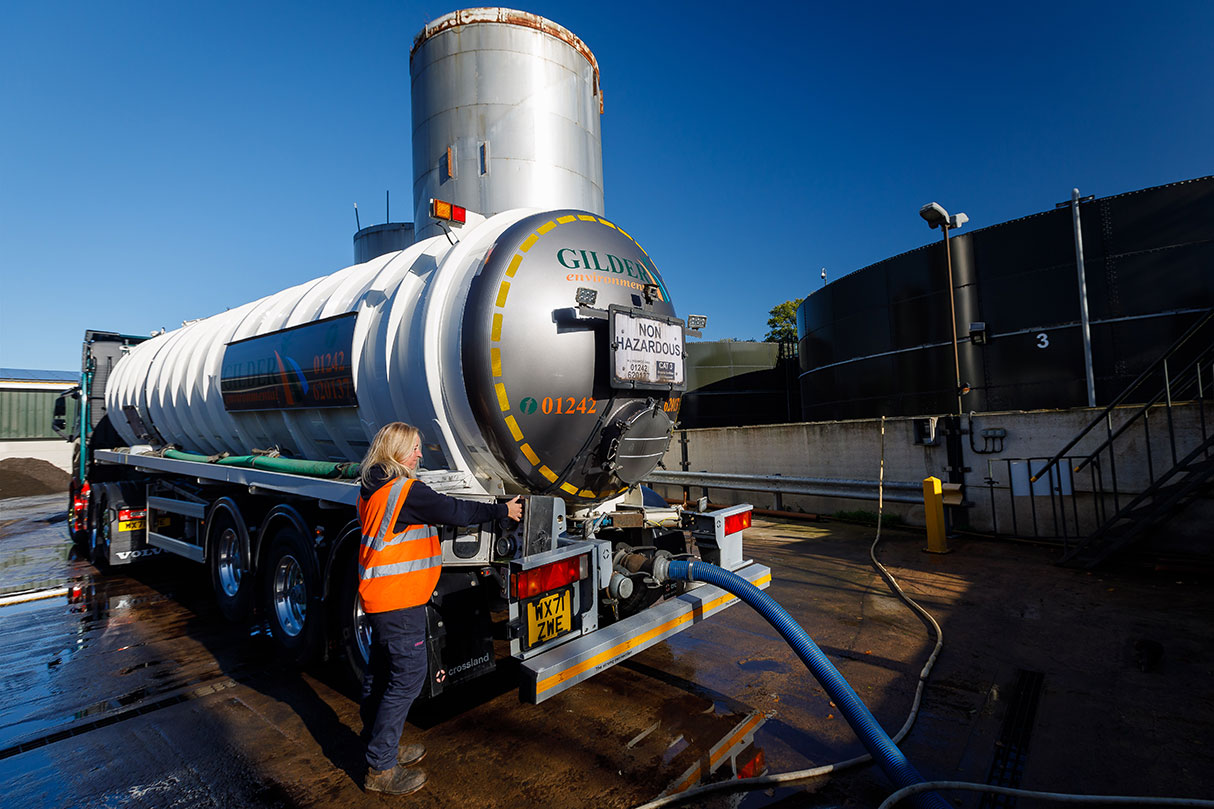Industrial Wastewater Treatment: Advanced Techniques for Effective Administration
Industrial Wastewater Treatment: Advanced Techniques for Effective Administration
Blog Article
Understanding the Comprehensive Refine of Fluid Garbage Disposal: Ideal Practices and Environmental Impact Considerations
The management of liquid waste disposal is a complex concern that calls for an extensive understanding of various ideal practices and their associated ecological influences. From the sorts of liquid waste produced to the approaches employed for collection, therapy, and final disposal, each step plays a vital function in protecting communities and public health. As regulatory criteria advance and modern technology developments, the conversation around these procedures ends up being increasingly relevant. What implications do these adjustments hold for future sustainability initiatives, and how can stakeholders ensure that they are appropriately resolved?
Kinds Of Liquid Waste
Comprehending the various sorts of liquid waste is crucial for efficient management and disposal methods. Fluid waste can be broadly categorized into a number of kinds, each requiring unique handling and therapy strategies.
Industrial liquid waste typically consists of hazardous materials, consisting of hefty steels, solvents, and chemicals, produced throughout making processes. These wastes necessitate stringent governing conformity to secure human wellness and the environment. Domestic liquid waste mostly describes wastewater generated from homes, including sewer and greywater, which, although much less toxic, can still pose significant risks if poorly handled.
Agricultural fluid waste, consisting of overflow from ranches, frequently consists of plant foods and pesticides that can cause ecological destruction otherwise treated properly. Medical liquid waste, generated from healthcare facilities, consists of contaminated liquids such as physical liquids and chemicals, calling for specialized disposal approaches to avoid infection and environmental contamination.
Lastly, oil and grease waste, normally created by restaurants and vehicle sectors, can trigger serious clogs in sewer systems if not managed effectively. Understanding these classifications helps with targeted techniques for treatment, conformity with policies, and effective disposal methods, eventually promoting environmental sustainability and public wellness safety.

Collection Approaches
Effective collection approaches are vital for the appropriate management of fluid waste, making sure that it is gathered safely and effectively before therapy or disposal. Different techniques are used depending on the type of fluid waste generated, the quantity, and the specific features of the waste.
One usual method is using devoted collection containers or sumps, which are created to capture liquid waste at the resource. These systems frequently incorporate pumps that assist in the transfer of waste to bigger storage containers or therapy centers. In addition, mobile collection units furnished with vacuum cleaner modern technology are utilized in scenarios where waste is generated periodically or in hard-to-reach places.
For industrial settings, closed-loop systems can successfully minimize spills and leaks, enabling the healing and reuse of fluid waste. It is also vital to educate employees on proper collection protocols to minimize dangers linked with unsafe substances.
Additionally, applying regular maintenance routines for collection devices ensures optimal performance and security. The assimilation of innovative monitoring systems can enhance collection effectiveness by supplying real-time information on waste degrees and possible threats. Overall, efficient collection approaches are foundational to sustainable fluid waste management methods.
Treatment Processes
Treatment processes play a crucial function in the administration of fluid waste, transforming possibly harmful materials into reusable resources or secure effluents - liquid waste disposal. These processes can read the article be broadly classified right into physical, chemical, and biological approaches, each tailored to address specific impurities existing in the waste stream
Physical therapy techniques, such as sedimentation and filtering, work by removing put on hold solids and particle issue. These methods are commonly the initial step in the therapy chain, properly lowering the load on subsequent processes. Chemical therapies include the use of reagents to counteract harmful materials, precipitate heavy metals, or oxidize natural contaminants, thereby enhancing the safety of the effluent.
Biological therapy procedures, including triggered sludge systems and anaerobic food digestion, take advantage of the all-natural abilities of bacteria to weaken organic issue. These methods are especially effective for wastewater including biodegradable toxins. Advanced therapy technologies, such more as membrane filtering and advanced oxidation processes, are significantly employed to achieve greater levels of purification.
Integrating a mix of these therapy techniques not only guarantees conformity with governing criteria but likewise promotes ecological sustainability by recuperating beneficial resources from liquid waste.
Disposal Options
Exactly how can companies ensure the responsible and safe disposal of liquid waste? Efficient disposal alternatives are crucial for protecting public health and wellness and the environment. The main techniques consist of land treatment, incineration, and disposal complied with by discharge right into metropolitan wastewater systems.
Land disposal entails the mindful control of liquid waste in designated garbage dumps, making sure that it does not seep right into bordering dirt or water. Incineration, on the various other hand, topics liquid waste to high temperatures, transforming it into ash and gases, which need appropriate filtration to decrease discharges. This technique is appropriate for harmful wastes that can not be dealt with via typical methods.
In situations where liquid waste can be dealt with, organizations may choose chemical or organic therapy processes to neutralize hazardous components before releasing the dealt with effluent into municipal systems. This route usually aligns with regulatory needs, making certain that the effluent meets security standards.
Inevitably, companies must perform complete evaluations of each disposal option to determine its viability, taking into consideration aspects such as waste composition, regulatory conformity, and prospective risks to wellness and the environment. By selecting appropriate disposal techniques, businesses can add to a responsible waste administration technique.
Ecological Effect
The environmental influence of liquid waste disposal is a vital factor to consider for companies looking for to minimize their environmental impact. Additionally, the discharge of neglected or improperly treated waste into surface waters can result in eutrophication, leading to oxygen depletion and the subsequent death of fish and various other organisms.

To reduce these impacts, companies need to embrace finest practices such as executing extensive waste therapy processes, promoting recycling and reuse, and sticking to governing criteria. By taking a positive strategy to fluid waste administration, entities can substantially minimize their ecological footprint while sustaining lasting development goals. Ultimately, a comprehensive understanding of the ecological effects connected with liquid waste disposal is essential for educated decision-making and accountable stewardship of natural sources.
Final Thought
Effective monitoring of liquid waste is critical for protecting ecological stability and public health. By embracing ideal techniques in disposal, treatment, and collection, alongside adherence to regulative standards, the possibility for unsafe contamination of ecological communities can be substantially reduced. Constant advancements in technology and procedures add to lasting waste management efforts. Ultimately, a thorough understanding of liquid garbage disposal not just mitigates environmental influences but likewise cultivates a commitment to liable resource monitoring and environmental stewardship.
The management of fluid waste disposal is a complex issue that needs a detailed understanding of various finest techniques and their associated environmental impacts. From the types of fluid waste produced to the methods used for collection, therapy, and final disposal, each step plays a critical role in protecting environments and public health and wellness.The ecological impact of liquid waste disposal is a crucial consideration for organizations seeking to decrease their environmental footprint. Inevitably, a thorough understanding of the ecological effects connected with fluid waste disposal is necessary for More Bonuses informed decision-making and accountable stewardship of natural resources.
Inevitably, a thorough understanding of fluid waste disposal not just mitigates ecological influences however likewise cultivates a dedication to responsible resource monitoring and ecological stewardship.
Report this page